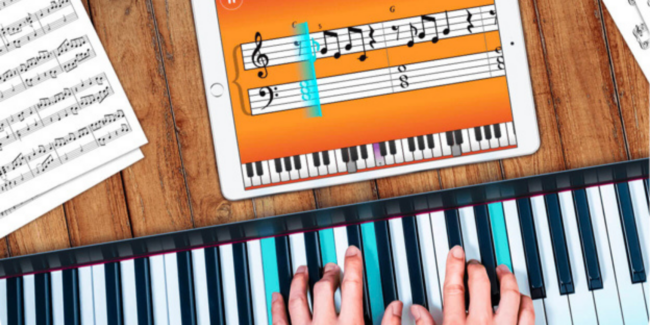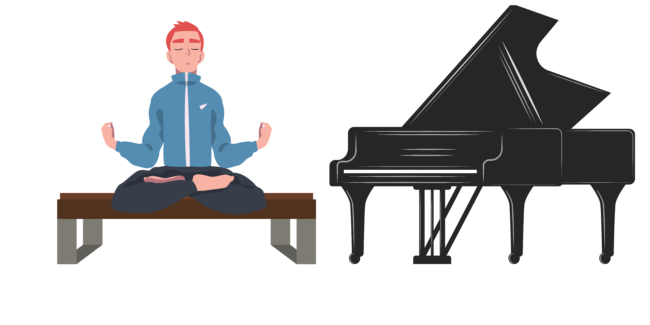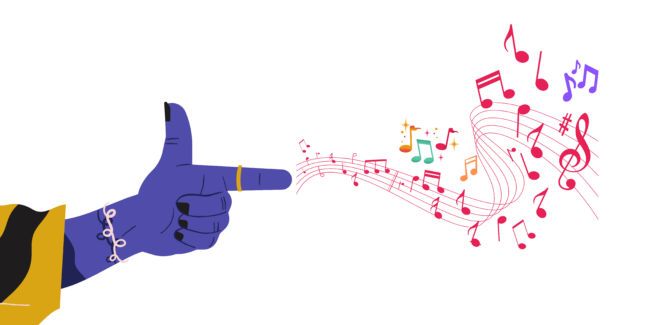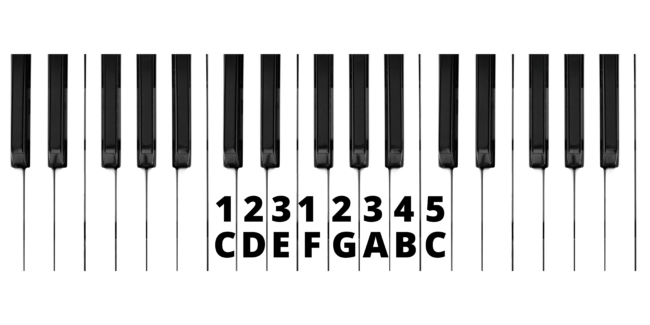Where to get started: Piano for beginners

Learning the piano as a beginner has its own challenges, especially if you’ve got a busy schedule and a limited amount of resources to dedicate to it. But when there’s a will there’s a way, and Simply makes that way a lot more, well, simple.
Piano exersizes for beginners should be fun and inspiring, challenging and engaging. That’s why we made Simply Piano instructional, straightforward, and super entertaining. It covers all the fundamentals but doesn’t drown you in technique.
It’s everything you need to start your piano journey.
This blog compiles some of the initial and essential topics that you’ll learn when you start to play piano with JoyTunes. Reading this will help you breeze through the first few lessons on the app!
Body posture
The art of playing piano starts before you even touch the keys! The way you sit at the piano has a significant impact on how you play. It’s essential to develop good sitting habits right from the beginning so you don’t have to skip piano lessons due to a bad back! The instruction for posture can be summarized into five words: don’t slouch and don’t arch.

When you first look down at the keys, the most natural thing to happen is to round your shoulders and slouch.
First, plant your feet firmly on the ground.
Then, imagine a puppet string gently pulling the center of your head upwards.
Relax your abdomen.
Now, softly tuck your chin.
But careful, though! You’re too rigid if your chest sticks out and your lower back arches.
Let the sit bones become heavy on your seat.
Imagine you have weights hanging from your underarms.
Hand posture
Hands to a piano are like legs to a bicycle! They must be strong, fit, and at ease. Healthy hand posture is essential so you don’t cramp up early in piano lessons.
Have your arms at approximately 90 degrees to the piano. Check that your wrists are level. If they’re too low, you’ll struggle to hit the keys with power, and your playing will be clumsy if they’re too high. Find the Goldilocks zone!
Ear training
When you start to play piano, you must understand what you hear.
The process of connecting theoretical knowledge with sound is called ear training. It’s similar to learning a language. The building blocks of ear training are:
- Pitch – The highness or lowness of sound frequencies.
- Notes – The twelve frequencies of Western music.
- Intervals – The spaces between notes.
- Scales – A series of seven notes with specific intervals that help build melodies.
- Chords – A combination of two or more notes you play simultaneously to create harmony.
You can learn about it in Ear Training for piano beginners.
Basic chord progressions
Once you’ve got a handle on these foundations of ear training, the JoyTunes online app teaches you to play stuff that sounds like music! This is all about getting into chord progressions – what makes a song a song!
To build a chord progression, select a scale like C major. Then, build chords on different scale degrees using the 1-3-5 formula.

There are so many simple chord progressions you can play with family or jam to with friends.
Take the 1-4-5 progression, for example. With these three chords, you can play hundreds of different songs:
1: C major (C, E, and G)
4: F major (F, A, and C)
5: G major (G, B, and D)
Check out Piano Music for Beginners for a complete guide to learning some basic but beautiful songs on the piano!

Finger speed
It’s all well and good to understand chord progressions, but to execute them, your fingers need to know how to dance! Building up dexterity in your fingers happens naturally over time, but it’s good to isolate and develop it.
The best exercise for this is playing scales with a metronome (a device that plays a beat to help you play in time). We have one built into the JoyTunes learning program!
Let’s start with the most straightforward scale, the C major scale. Remembering that we number fingers one to five – here are the correct finger placements for playing the C major scale with your right hand:

Play the scale up and down. Be sure to play it in time, one note per click of the metronome. Don’t forget to use the correct sitting and hand posture. When it feels comfortable, speed up the metronome and see if you can keep up!
Counting whole notes
Now that you can loosen up your fingers and play in time, you have to learn about how rhythm divides and articulates in the language of music.
Put the metronome on a tempo (speed/pace) of 60 beats per minute. Make sure to set the time signature (a division of beats) to 4/4, which means there are four beats in a bar.
A whole note is worth four beats. It looks like this:
This means, if you play one note (any note!) every four beats, you will play whole notes. Try this with the metronome and see how it feels!
Counting half notes
Half notes are double the speed. They look like this:
This means you’ll be playing one note for every two beats. You can try this at different tempos by changing it on the metronome. It can be confusing, but make sure you distinguish the division of beats from the tempo or pace.
Counting quarter notes
As you might predict, quarter notes are double the speed of half notes! That means you’ll be playing one note per beat. They look like this:

The language of musical rhythm continues to divide beats into smaller and smaller parts, including eighth, sixteenth, and thirty-second notes! But for beginners at the piano, it’s best to get comfortable with whole, half, and quarter notes. Practice them with the metronome, practice playing your scales on these rhythms, and you’ll have a strong foundation.
Ready to put your piano lessons into action?
This might feel like a lot of information.
And it is!
The early days of learning piano can be overwhelming and frustrating. There’s so much new language, technique, and attention to detail.
However, Simply Piano gives you genuine results in a steady, satisfying, and at-your-own-pace way.









